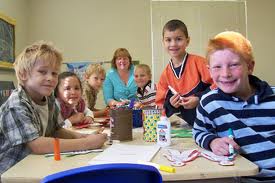
I recently conducted a Sunday School survey to discern the differences between growing and declining Sunday Schools? For more information about the survey, check out the series beginning with Initial Reflections on Sunday School Survey Results, Part 1. Two of the survey statements (and response choices and percentages) were the following:
When I think of space in my current Sunday School classes, most classrooms are… (Mostly empty; About half full; Mostly full; Full)
Question 29 Growing vs. Declining
- Mostly empty 5.7% 23.4%
- About half full 60.7% 47.2%
- Mostly full 27.0% 26.4%
- Full 2.5% 1.0%
In my church, there is this amount of available (unused) Sunday School classroom space: (No unused rooms; 1 or 2 unused rooms; Several unused rooms)
Question 31 Growing vs. Declining
- No unused rooms 33.6% 21.3%
- 1 or 2 unused rooms 49.2% 51.8%
- Several unused rooms 13.1% 22.8%
According to responses from these pastors and Sunday School directors, declining Sunday Schools are more likely to respond that their classes are mostly empty. Growing Sunday Schools are more likely to at least be half full. In both cases, Sunday Schools that are “mostly full” or “full” may be in danger of growth stalling or declining. Attention should be given as early as possible to these classes and Sunday Schools. Even Sunday Schools with classroom space about half full should watch. According to responses from these leaders, growing Sunday Schools will have fewer available empty rooms.
Classrooms should allow 12-15 square feet per adult or youth, 20-25 square feet per child in grades 1-6, and 25-35 square feet per preschooler ages birth-5. What can be done when classroom space approaches 80% of capacity? There are several options:
- move classes to space of size to allow growth, larger classes to larger rooms and smaller classes to smaller rooms;
- consider use of open space (fellowship hall, sanctuary, etc.) for multiple classes around tables (with our without sight barriers);
- clean out storage space;
- consider space used for other purposes (offices, kitchen, etc.);
- consider nearby space (homes, offices, etc.);
- begin planning to move to have a second session of Sunday School before and after worship (may have to adjust schedule);
- offer classes on Sunday afternoon/evening, another day of the week, or another location; and
- begin planning for renovating your educational space or constructing new space.
These options can also help in starting new classes. What would you add to this list to help growing (and declining) Sunday Schools avoid stalling or stopping their growth? Don’t settle for full. Don’t make people uncomfortable in space too small (and dangerous) for current attendance. Pray. Plan to grow. Make disciples. Be revolutionary!
Leave a Reply